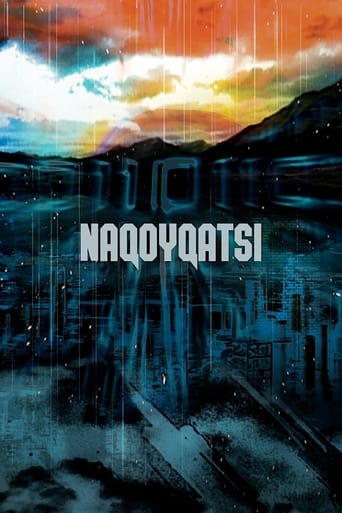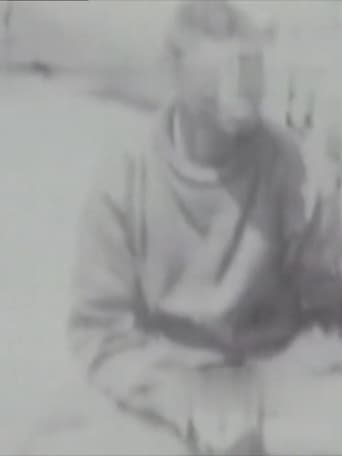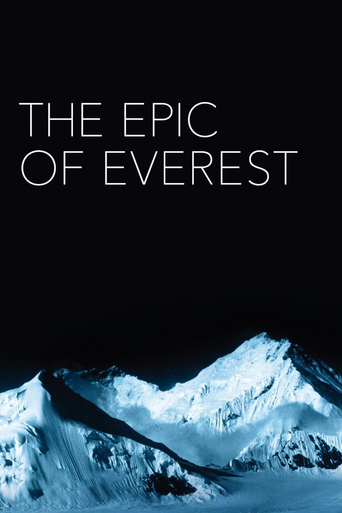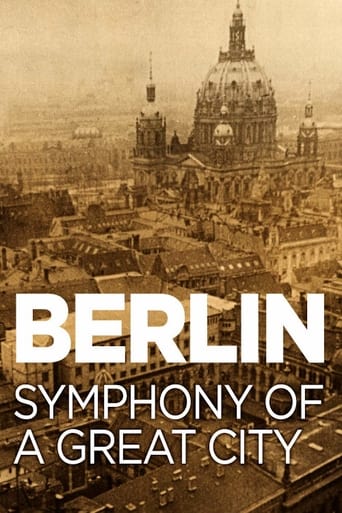
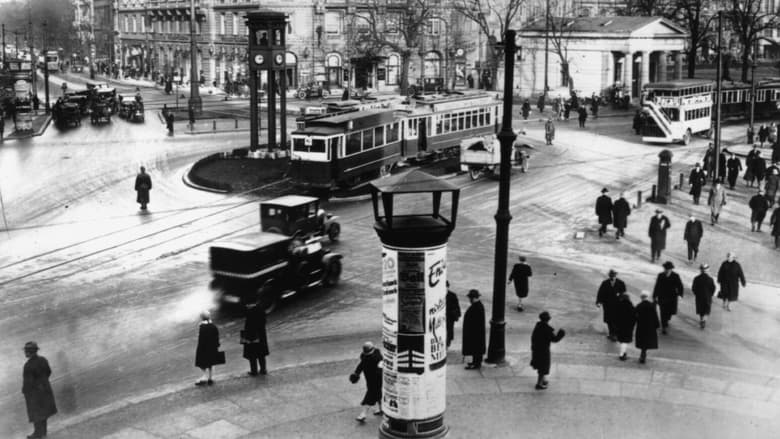
Berlin: Symphony of a Great City (1927)
A day in the city of Berlin, which experienced an industrial boom in the 1920s, and still provides an insight into the living and working conditions at that time. Germany had just recovered a little from the worst consequences of the First World War, the great economic crisis was still a few years away and Hitler was not yet an issue at the time.
Watch Trailer
Cast
Similar titles
Reviews
Just perfect...
It's no definitive masterpiece but it's damn close.
Fresh and Exciting
There's no way I can possibly love it entirely but I just think its ridiculously bad, but enjoyable at the same time.
Walter Ruttmann's documentary love letter to the German capital, shows the city from the morning proletariat on their way to work, to the decadent bourgeois night of Wiemar Republic, 1920's high living opulence. It shows the shops and market stalls opening, the streets filling, industry moving. The almost constantly static camera captures both the poverty and the affluence. Along with the single shots of the surroundings, there are the occasional flourish of the avant-garde; kaleidoscopic, spinning images similar in experimental joy as Al Bricks Looney Lens series (Split Skyscrapers, Tenth Avenue, NYC (both 1924)), often using split screens and other such optical effects to create hall- of-mirror comparisons.The films style also often reflects the influence of Sergei Eisenstein and Dziga Vertov's Soviet montage, a style that suggested sub-textual meaning using a series of juxtaposing images. At the start of Berlin... the working classes, walking to their factories, moving uniformly, then images of cattle, and soldiers are sliced, creating the metaphor. Whilst not as politically motivated as the Soviet's, this is still an interesting document of a city living in stark contrasts, in a country still ravaged by the failures of WWI. But watching it now, you become reflective of the changes to this important city. It's history since the making of this film (events that the director would never see, due to his death in 1941), which is devastated by war, and divided by a wall. It's always fascinating to see visual "objects" of the past. Whilst this doesn't have the interesting longevity of the more political Soviet films, this is an important piece of silent-era documentary, and would go on to influence the British documentary movements of the 1930's and 40's.www.the-wrath-of-blog.blogspot.com
One can understand why this film might be important to the development of a certain film aesthetic. One can understand why it might have been interesting to view back in its day. But (much like Vertov's Man with a Movie Camera) I found it dull to watch today. Much early 20th-century fascination with large machinery, lots of shots alluding to "man as cog in the machine" Leninism, etc etc etc. And, as someone else here has noted, a number of the the "documentary" shots were clearly staged, which undercuts somewhat the life-on-the-street feeling the film is trying to convey.It is somewhat interesting to see pre-WW2 Berlin, but the editing moves so quickly that one really can't get a good sense of the city. I understand that, arguably, that was part of the point -- e.g. that all cities are the same, but being able to really look at pre-war Berlin might have made it a more intriguing film today.Overall, to me at least, it felt too much like a series of nickelodeon shorts pieced together for a false, or at least dated, effect.
A day in the life of 1920's Berlin, with arty mechanical shots, and a variety of urban experiences united by their time of day. This is painfully dull to watch, and has no continuity in terms of story line or characters. Its nice to have an authentic look at the past, and some of the mechanical shots, the whimsical statue-figure shots, and the evening entertainment shots are interesting, but overall it is a massive chore to sit through. It could be the overbearing score that pounds home the urban theme with a punishing tone that detracts from the film, and a kindler and gentler score could mitigate the films lack of entertainment value. Score or not, the overrating on this site of this film is beyond comprehension. People who claim to like this film deserve to watch Man With A Camera, the Russian version of the same thing, which is equally tedious.
`Berlin, Symphony of a Great City' is a film I've watched over and over with fascination. I think it's true that it is not so much about the people of Berlin, although we see many of them, but the city itself as a huge living, breathing organism. Back in the 1930s filmmaker John Grierson apparently wrote that this film `created nothing,' and that it violated the first principles of documentary by showing us nothing of importance but beautiful images. Looking at it more than 70 years after its creation, however, its documentary value seems evident to me, at least. I find it fascinating just to see what the people, clothing, uniforms, vehicles, streets, parks, restaurants, shops, theaters, nightclubs, and factories looked like in that distant time and place. It's amazing to contemplate how soon this complex, sophisticated society would be consumed in the most primitive debauchery. Do these people really look that much different from those we see on our streets every day? It makes me wonder what we're all potentially capable of.Some slight differences do seem apparent, however. When a fight breaks out in a public place today, people usually try to ignore it, or even duck their heads and run for cover. But in a scene where two men argue violently in the street, the Berliners of the 1920s crowd in close around the combatants, and even try to separate them and arbitrate the dispute, before a policeman moves in. Whether this was typically European at that time, or just typical of its era, I really can't say, but it seems strange to me today.Although I think the majority of this film was shot in a candid manner, and looks it, it's obvious that not quite all of it was un-staged, as a previous commentator has pointed out. For example, look at the argument scene just mentioned. Considering one of the camera angles (probably from a 2nd floor window), the argument must have been staged at the exact spot where this camera could catch it, and the crowd's reaction, from above. In addition, a second camera was in place at street level to move in close, which hardly suggests a serendipitous event.A good musical score is vitally important to bring this film to life. It's too bad the original score has been lost. It would be fascinating to know what it was like. But I think the one written by Timothy Brock for the Kino edition is superb in that it captures its changing moods and rhythms. If, as one internet reviewer commented, it seems a bit melancholy, that may be apropos considering that this beautiful city, and a great many of its inhabitants, would be consumed in fire less than 20 years later.

